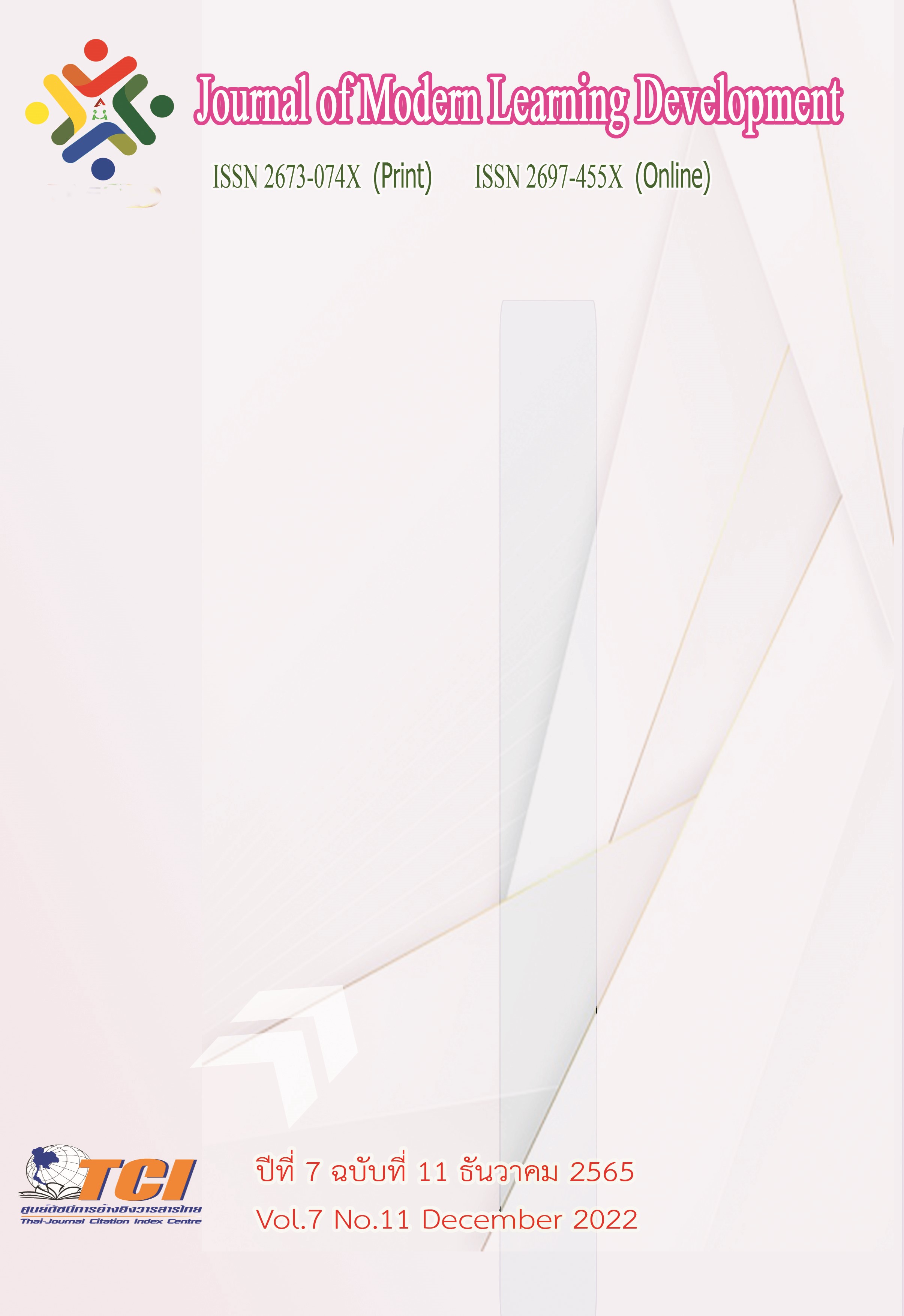The use of context to determine the meaning of words, as demonstrated by the translation of Thai idioms that always requires cultural knowledge and translation strategies
Main Article Content
Abstract
This academic paper discusses the use of context to determine the meaning of words, as demonstrated by the translation of Thai idioms that always requires cultural knowledge and translation strategies. This paper is divided into 3 topics as follows 1) Contextual word definitions and language translation. 2) the necessity of Cultural understanding for translating idioms from English to Thai 3) the method to apply the appropriate translation strategies to translate Thai idioms. In order to collect the information and examples for this academic paper, the author reviewed the literature relating to language principles and linguistics, including the perspectives on the necessity of understanding the culture and origins of idioms in both Thai and foreign languages. The author suggested five strategies that translators can use to translate Thai idioms effectively, including 1) an equivalence strategy that compares idioms to other idioms between the source language and the target language whose meanings are the same; 2) strategies for semantic equivalence with the translation that express the original meaning of the text using new words, and 3) strategies for translating idioms verbatim only when ensuring that the reader in the target language will understand them; 4) text-shortening translation strategy; 5) adding descriptions to idioms to clarify their meaning in interpretation strategy. In addition, the author found that no specific translation strategy works best for translating Thai idioms. Rather, several different translation strategies can be used. The translator must choose the most effective strategy for the translation regardless of whether the source text contains any idioms or unusual wording. When adapting a text to its native linguistic environment, it may be essential to combine several strategies.
Article Details
References
กาญจนา นาคสกุล. (2544). ภาษาไทยวันนี้ : รวมคำภาษาไทยน่ารู้จากนิตยสารสกุลไทยและโทรทัศน์. กรุงเทพมหานคร: สำนักพิมพ์เพื่อนดี.
ขุนวิจิตรมาตรา (สง่า กาญจนพันธุ์). (2543). สำนวนไทย. (พิมพ์ครั้งที่ 5). กรุงเทพมหานคร: สมาคมส่งเสริมเทคโนโลยี (ไทย-ญี่ปุ่น) ดวงกมล.
ดียู ศรีนราวัฒน์ และชลธิชา บำรุงรักษ์. (2558). ภาษาและภาษาศาสตร์. กรุงเทพมหานคร: สำนักพิมพ์มหาวิทยาลัยธรรมศาสตร์.
นววรรณ พันธุเมธา. 2559. คลังคำ. (พิมพ์ครั้งที่ 7). กรุงเทพมหานคร: สำนักพิมพ์อมรินทร์.
นันทนา วงษ์ไทย. (2561). ภาษาและความหมาย. กรุงเทพมหานคร: โรงพิมพ์ เค.ซี. อินเตอร์เพรส.
รัชนี ซอโสตถิกุล. (2560). สำนวนอังกฤษและสำนวนไทยที่มีความหมายคล้ายคลึงกัน. (พิมพ์ครั้งที่ 9) กรุงเทพมหานคร: สำนักพิมพ์จุฬาลงกรณ์มหาวิทยาลัย.
รัชนีโรจน์ กุลธำรง. (2552). ความรู้ความเข้าใจเรื่องภาษาเพื่อการแปล: จากทฤษฎีสู่การปฏิบัติ. กรุงเทพมหานคร: สำนักพิมพ์จุฬาลงกรณ์มหาวิทยาลัย.
ราชบัณฑิตยสถาน. (2542). พจนานุกรมภาษาไทยฉบับราชบัณฑิตยสถาน. กรุงเทพมหานคร: นานมีบุ๊คส์พับลิเคชั่นส์.
ล้อม เพ็งแก้ว. (2544). ค้นคำ เต้นความ. กรุงเทพมหานคร: ศยาม.
วรารัชต์ วัสสานนท์. (2544). การศึกษารูปภาษาที่ใช้เป็นสำนวนในไทยในปัจจุบัน. สาขาวิชาภาษาไทย. คณะอักษรศาสตร์. วิทยานิพนธ์อักษรศาสตรมหาบัณฑิต. บัณฑิตวิทยาลัย: มหาวิทยาลัยศิลปากร.
วีรพงศ์ มีสถาน. (2563). สำนวนไทย ที่ไปที่มา. นครปฐม: พริ้นเทอรี่ ศาลายา.
ศยามล ศรสุวรรณศรี. (2553). การแปลสำนวนในวรรณกรรมชุดนาร์เนีย เรื่อง ตู้พิศวง และผจญภัยโพ้นทะเล เป็นภาษาไทย โดย สุมนา บุณยะรัตเวช. สาขาวิชาภาษาและวัฒนธรรมเพื่อการสื่อสารและการพัฒนา. วิทยานิพนธ์ศิลปศาสตรมหาบัณฑิต. บัณฑิตวิทยาลัย: มหาวิทยาลัยมหิดล.
สุพรรณี ปิ่นมณี. (2562). ภาษา วัฒนธรรม กับการแปล: ไทย-อังกฤษ. กรุงเทพมหานคร: สำนักพิมพ์จุฬาลงกรณ์มหาวิทยาลัย.
สุวัฒชัย คชเพต. (2564). หลักการทางภาษาศาสตร์กับกลยุทธ์การแปลสำนวนภาษาไทยจากฐานความเข้าใจวัฒนธรรม. วารสารมนุษยศาสตร์ปริทรรศน์. 43 (1), 69-91.
Baker, M. (1992). In Other Words: A Coursebook on Translation. (1st Ed). New York: Routledge.
Baker, M. (2018). In Other Words: A Coursebook on Translation. (3rd Ed). New York: Routledge.
Larson, M.L. (1998). Meaning-Based Translation. (2nd Ed). Lanham: University Press of America, Inc.
Leech, G. (1981). Semantics: The Study of Meaning. (2nd Ed). Middlesex: Penguin Books.
Newmark, P. (1981). Approaches to Translation. (1st Ed). Oxford; New York: Pergamon Press.
Nida, E. A. (1969). Science of Translation. Language, 45 (3), 483-498.
Summers, D. (2003). Longman Dictionary of Contemporary English. (New Ed). Essex: Pearson Education.
Zabelbeacscoa, P. (1997). Language awareness and translation. L. van Lier and D. Corson (Eds.), Encyclopedia of language and education volume 6: Knowledge about language. 119-130. Springer, Dordrecht: Kluwer Academic Publishers.


